PINACOTECA MIGRANTE: SPAIN AT THE VENICE BIENNALE
Spanish-Peruvian artist Sandra Gamarra Heshiki represents Spain at the Venice Biennale. It is the first time in 60 editions that an artist not born in Spain does so. Her project Pinacoteca migrante (Migrant gallery), questions colonial narratives and historical modes of representation.
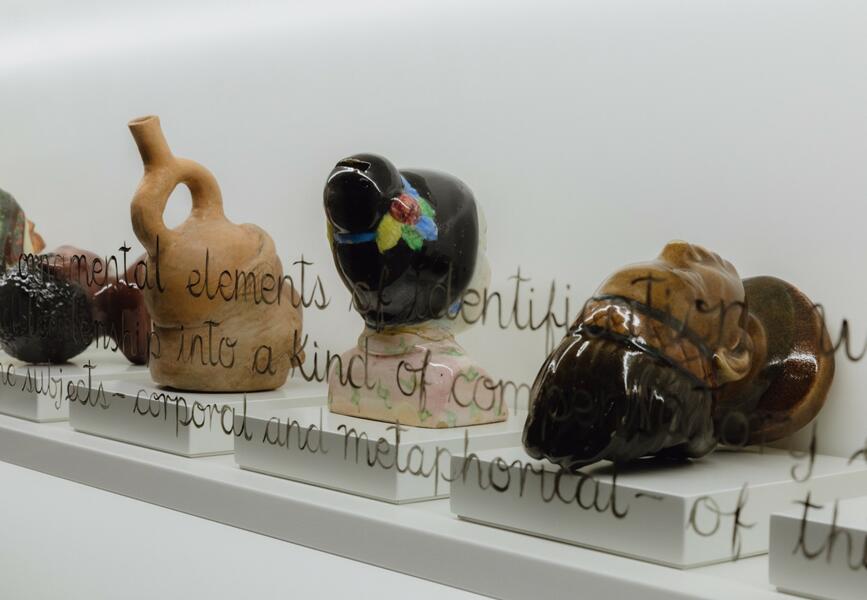
Pinacoteca migrante is curated by Agustín Pérez Rubio, with a long career in Latin American art as artistic director of the Museo de Arte Latinoamericano de Buenos Aires (Malba) or as curator of the Chilean pavilion at the 2018 Biennale.
Spain's pavilion at the 60th Venice Biennale -to be held from April 20 to Nov. 24- turns into a space to reread Spain's pictorial heritage (Murillo, Zurbaran or even Velazquez) and to give visibility to silenced cultures. Gamarra Heshiki, who was already at the 2009 Venice Biennale in the pavilion of the Italian-Latin American Institute, takes as a starting point the paintings from the Empire to the Enlightenment, in which reference is made to the territories that were part of Spain, but that carry with them a "monolithic notion based on the destruction of other forms of social organization". Through six rooms or sections the exhibition will go through the classic genres of the arts with interventions and reinterpretations that will analyze the biased representations between colonizers and colonized, in addition to offering a historical context that is linked to the present day.
-
Pavilion of SPAIN. PINACOTECA MIGRANTE / MIGRANT ART GALLERY. 60th International Art Exhibition - La Biennale di Venezia. Photo: Matteo de Mayda. Courtesy: La Biennale di Venezia
-
Pavilion of SPAIN. PINACOTECA MIGRANTE / MIGRANT ART GALLERY. 60th International Art Exhibition - La Biennale di Venezia. Photo: Matteo de Mayda. Courtesy: La Biennale di Venezia
-
Pavilion of SPAIN. PINACOTECA MIGRANTE / MIGRANT ART GALLERY. 60th International Art Exhibition - La Biennale di Venezia. Photo: Matteo de Mayda. Courtesy: La Biennale di Venezia
-
Pavilion of SPAIN. PINACOTECA MIGRANTE / MIGRANT ART GALLERY. 60th International Art Exhibition - La Biennale di Venezia. Photo: Matteo de Mayda. Courtesy: La Biennale di Venezia
The artist will transform the Spanish Pavilion into a historical art gallery of Western art where the notion of "migration", in its multiple facets, will be the protagonist. The Western concept of art gallery, which was exported to the former colonies, is inverted, exposing a series of historically silenced narratives. Thus, Pinacoteca migrante revisits the protocols of accessibility, diversity and sustainability to update institutions that take on contemporary debates on racism, migration or extractivism. The protagonists are migrants, both human and non-human: living organisms, plants and raw materials that often made the round trip by force.
The works presented interfere with the lack of decolonial narratives in museums and will analyze the biased representations between colonizers and colonized. Sociology, politics, art history and biology are intertwined in this research.
-
Pavilion of SPAIN. PINACOTECA MIGRANTE / MIGRANT ART GALLERY. 60th International Art Exhibition - La Biennale di Venezia. Photo: Matteo de Mayda. Courtesy: La Biennale di Venezia
-
Pavilion of SPAIN. PINACOTECA MIGRANTE / MIGRANT ART GALLERY. 60th International Art Exhibition - La Biennale di Venezia. Photo: Matteo de Mayda. Courtesy: La Biennale di Venezia
-
Pavilion of SPAIN. PINACOTECA MIGRANTE / MIGRANT ART GALLERY. 60th International Art Exhibition - La Biennale di Venezia. Photo: Matteo de Mayda. Courtesy: La Biennale di Venezia
-
Pavilion of SPAIN. PINACOTECA MIGRANTE / MIGRANT ART GALLERY. 60th International Art Exhibition - La Biennale di Venezia. Photo: Matteo de Mayda. Courtesy: La Biennale di Venezia
The rooms that make up Pinacoteca migrante are titled: Tierra Virgen, on paintings of Spanish landscapes, but also from Latin America, the Philippines and North Africa; Gabinete de la extinción, which links colonialism with extractivism; Gabinete del Racismo Ilustrado, a story about how anthropology and science were used as a tool for racial discrimination; Máscaras mestizas, about the portrait of colonists; Retablo de la Naturaleza Moribunda, which will relate still life with the construction of opulence and treasures; and Jardín Migrante, which will recreate monuments about the conquest that are located in the former colonies. All of them will combine plastic arts with quotations from writers or ecofeminist thinkers; modifications of facsimiles of illustrations from real archives or representations of allochthonous or invasive plants, in allusion to migration.
Related Topics
May interest you
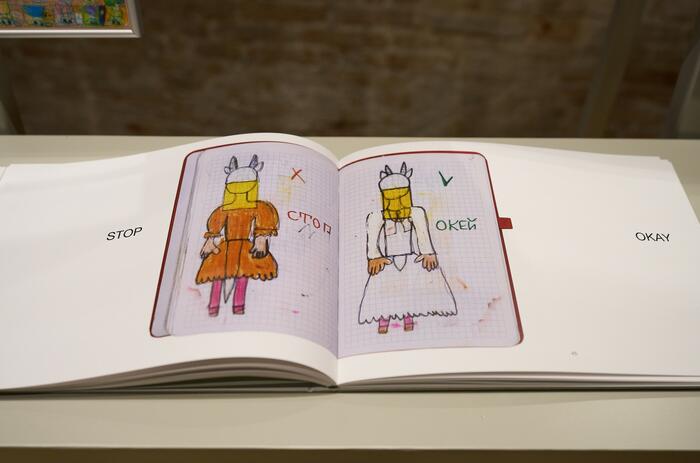
The Ukranian Pavilion addresses the othering effect of war, two years into the Russian Invasion, in Net Making at the 60th Venice Biennale.
UKRAINE AND THE EFECT OF WAR AT VENICE BIENNALE
The Ukranian Pavilion addresses the othering effect of war, two years into the Russian Invasion, in Net Making at the 60th Venice Biennale.

The Ukranian Pavilion addresses the othering effect of war, two years into the Russian Invasion, in Net Making at the 60th Venice Biennale.
UKRAINE AND THE EFECT OF WAR AT VENICE BIENNALE
The Ukranian Pavilion addresses the othering effect of war, two years into the Russian Invasion, in Net Making at the 60th Venice Biennale.
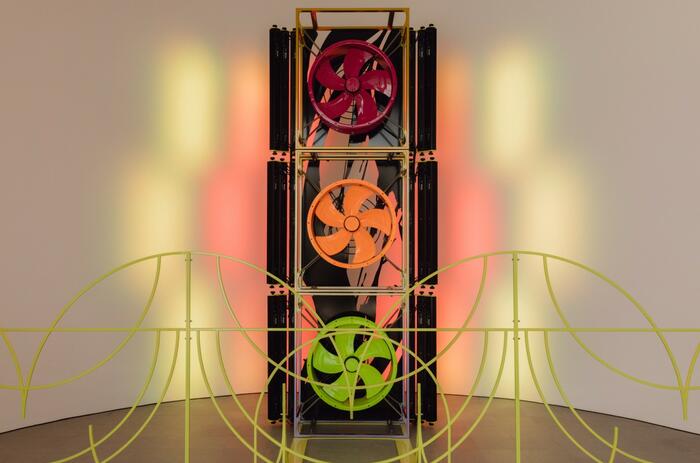
For the 60th International Venice Biennale, Nemes designed the project as an immersive, painting-based Gesamtkunstwerk that expands the genre of painting and extends it to other media. Project curated by Róna Kopeczky.
TECHNO ZEN BY MÁRTON NEMEZ: THE HUNGARIAN PAVILION IN VENICE BIENNALE
For the 60th International Venice Biennale, Nemes designed the project as an immersive, painting-based Gesamtkunstwerk that expands the genre of painting and extends it to other media. Project curated by Róna Kopeczky.
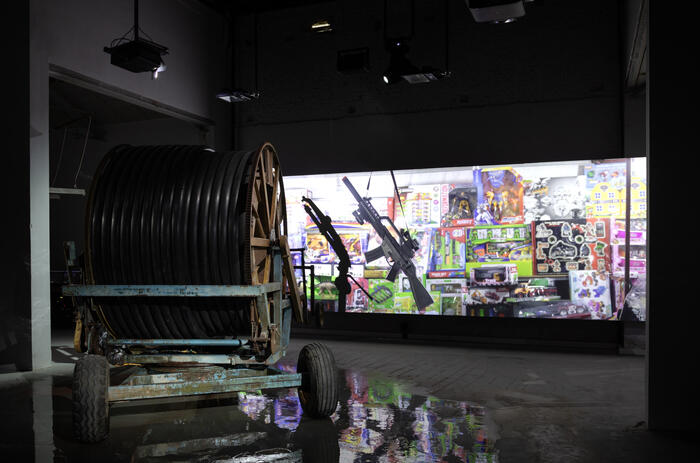
Xirómero / Dryland is an interdisciplinary collective work conceived by Thanasis Deligiannis and Yannis Michalopoulos, created along with the artists Elia Kalogianni, Yorgos Kyvernitis, Kostas Chaikalis and Fotis Sagonas for the Greek Pavilion at the 60th Venice Biennale. The project is curated by Panos Giannikopoulos.
WATER AS A PRISM: GREEK PAVILION AT THE VENICE BIENNALE
Xirómero / Dryland is an interdisciplinary collective work conceived by Thanasis Deligiannis and Yannis Michalopoulos, created along with the artists Elia Kalogianni, Yorgos Kyvernitis, Kostas Chaikalis and Fotis Sagonas for the Greek Pavilion at the 60th Venice Biennale. The project is curated by Panos Giannikopoulos.

The exhibition of the 60th edition of the Venice Biennale - Stranieri Ovunque (Foregneirs Everywhere) - curated by Brazilian Adriano Pedrosa, presents 331 artists, significantly more than the usual number. More than a third of those artists come from Latin America.
FOREIGNERS EVERYWHERE: LATIN AMERICA TAKES OVER THE VENICE BIENNALE
The exhibition of the 60th edition of the Venice Biennale - Stranieri Ovunque (Foregneirs Everywhere) - curated by Brazilian Adriano Pedrosa, presents 331 artists, significantly more than the usual number. More than a third of those artists come from Latin America.
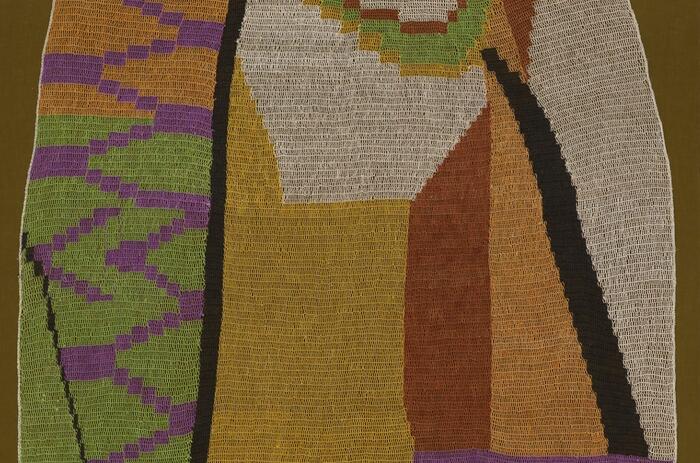
For the 60th International Exhibition of la Biennale di Venezia Stranieri Ovunque (Foregneirs Everywhere), artist Claudia Alarcón and art-collective Silät are presenting their reflections on being treated as foreigners in their own country.
CLAUDIA ALARCÓN AND SILÄT’S VENICE BIENNALE PARTICIPATION
For the 60th International Exhibition of la Biennale di Venezia Stranieri Ovunque (Foregneirs Everywhere), artist Claudia Alarcón and art-collective Silät are presenting their reflections on being treated as foreigners in their own country.
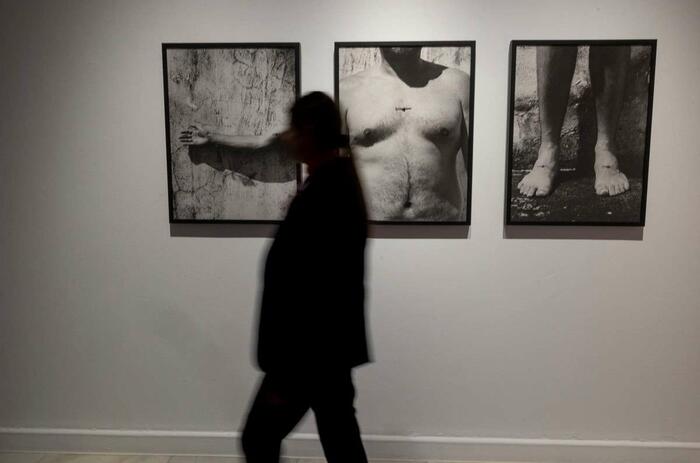
Concrete Wounds/Herida concreta is the exhibition that the Canary Islands' Centro Atlántico de Arte Moderno (CAAM) is dedicating to Karlo Andrei Ibarra (San Juan, Puerto Rico, 1982), one of the most promising and internationally renowned names of the Puerto Rican art scene.
THE POLITICAL AND SOCIAL MEANINGS OF KARLO ANDREI IBARRA AT CAAM
Concrete Wounds/Herida concreta is the exhibition that the Canary Islands' Centro Atlántico de Arte Moderno (CAAM) is dedicating to Karlo Andrei Ibarra (San Juan, Puerto Rico, 1982), one of the most promising and internationally renowned names of the Puerto Rican art scene.
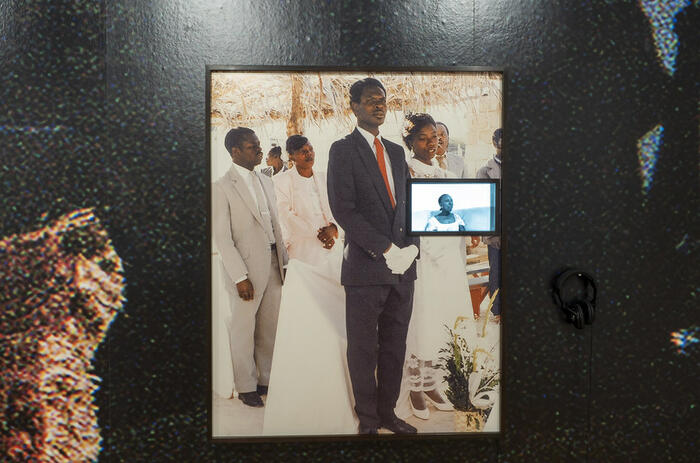
Widline Cadet (Pétion-Ville, Haiti, 1992) brings together in her life experience several of the aspects and themes that, perhaps, have inspired more production among all those curatorial lines with more presence. Her biography, constructed through childhood memories, the environment of a generation and a country marked by its own strong culture or the phenomena of emigration, constitutes the framework in which the photographer develops the practical integrity of her work.
MEMORY AND DIASPORA IN WIDLINE CADET
Widline Cadet (Pétion-Ville, Haiti, 1992) brings together in her life experience several of the aspects and themes that, perhaps, have inspired more production among all those curatorial lines with more presence. Her biography, constructed through childhood memories, the environment of a generation and a country marked by its own strong culture or the phenomena of emigration, constitutes the framework in which the photographer develops the practical integrity of her work.

The Panama Pavilion at the 2024 Venice Art Biennale arises as a profound reflection on the enduring traces that migration leaves on individuals and their surroundings. Entitled Traces: On the Body and on the Land, this exhibition echoes the current migration crisis with a particular focus on the Panamanian context, interpreted by four artists through drawings, paintings, collages, glass sculptures, and installations.
TRACES – PANAMÁ’S DEBUT AT THE VENICE BIENNALE
The Panama Pavilion at the 2024 Venice Art Biennale arises as a profound reflection on the enduring traces that migration leaves on individuals and their surroundings. Entitled Traces: On the Body and on the Land, this exhibition echoes the current migration crisis with a particular focus on the Panamanian context, interpreted by four artists through drawings, paintings, collages, glass sculptures, and installations.

Manifesta, the European nomadic biennial, as it is defined, returns to Spain after past editions in San Sebastian (2004) and Murcia (2010) and will hold its 15th edition in the Metropolitan Area of Barcelona from September 8 to November 24. The multidisciplinary program of actions and exhibitions will be developed around the concept of place and time, focusing, through the exhibition venues chosen in the twelve participating municipalities, on the past, present and future of this region.
THE METROPOLITAN AREA OF BARCELONA HOSTS MANIFESTA 15
Manifesta, the European nomadic biennial, as it is defined, returns to Spain after past editions in San Sebastian (2004) and Murcia (2010) and will hold its 15th edition in the Metropolitan Area of Barcelona from September 8 to November 24. The multidisciplinary program of actions and exhibitions will be developed around the concept of place and time, focusing, through the exhibition venues chosen in the twelve participating municipalities, on the past, present and future of this region.
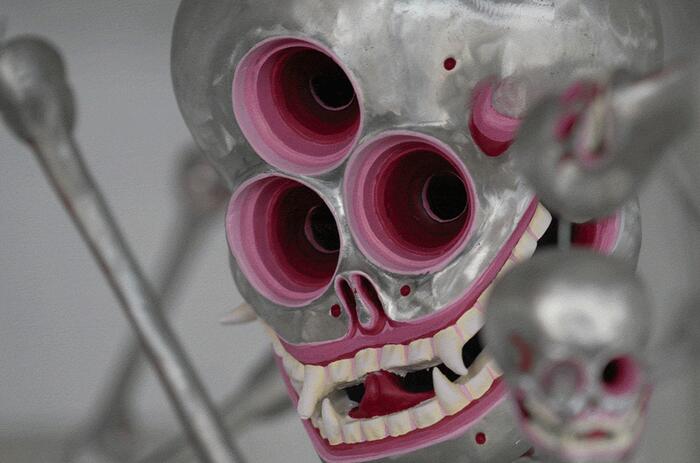
The Mongolian Pavilion at the Venice Biennale presents artist Ochirbold Ayurzana with the exhibition Discovering the Present from the Future. The proposal is curated by Oyuntuya Oyunjargal, the Cultural Envoy of Mongolia to Germany, and co-curated by Gregor Jansen, director of the Kunsthalle Düsseldorf in Germany.
OCHIRBOLD AYURZANA AT THE MONGOLIAN PAVILION
The Mongolian Pavilion at the Venice Biennale presents artist Ochirbold Ayurzana with the exhibition Discovering the Present from the Future. The proposal is curated by Oyuntuya Oyunjargal, the Cultural Envoy of Mongolia to Germany, and co-curated by Gregor Jansen, director of the Kunsthalle Düsseldorf in Germany.

Engaging with the theme of Adriano Pedrosa’s main exhibition for the Venice Biennale, Stranieri Ovunque—Foreigners Everywhere, Vlatka Horvat’s project for the Croatian Pavilion by the Means at Hand, curated by Antonia Majaca, exists as an accumulative exhibition of artworks by a wide-ranging group of international artists living as “foreigners,” reflecting on questions and urgencies of the diasporic experience.
CROATIAN PAVILION AT THE VENICE BIENNALE
Engaging with the theme of Adriano Pedrosa’s main exhibition for the Venice Biennale, Stranieri Ovunque—Foreigners Everywhere, Vlatka Horvat’s project for the Croatian Pavilion by the Means at Hand, curated by Antonia Majaca, exists as an accumulative exhibition of artworks by a wide-ranging group of international artists living as “foreigners,” reflecting on questions and urgencies of the diasporic experience.
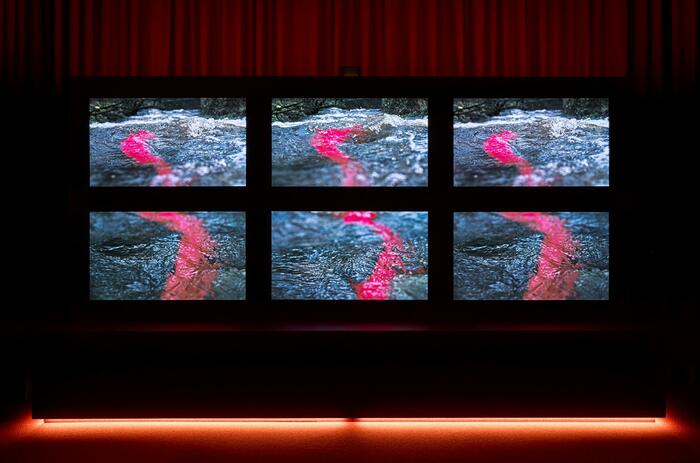
The monumental commission by British artist John Akomfrah RA for the 2024 Venice Biennale is a multi-layered exhibition which encourages visitors to experience the British Pavilion’s 19th century neoclassical building in a new way.
THE SOUNDS OF TIME – UNITED KINGDOM AT THE VENICE BIENNALE
The monumental commission by British artist John Akomfrah RA for the 2024 Venice Biennale is a multi-layered exhibition which encourages visitors to experience the British Pavilion’s 19th century neoclassical building in a new way.

The Ukranian Pavilion addresses the othering effect of war, two years into the Russian Invasion, in Net Making at the 60th Venice Biennale.
UKRAINE AND THE EFECT OF WAR AT VENICE BIENNALE
The Ukranian Pavilion addresses the othering effect of war, two years into the Russian Invasion, in Net Making at the 60th Venice Biennale.

For the 60th International Venice Biennale, Nemes designed the project as an immersive, painting-based Gesamtkunstwerk that expands the genre of painting and extends it to other media. Project curated by Róna Kopeczky.
TECHNO ZEN BY MÁRTON NEMEZ: THE HUNGARIAN PAVILION IN VENICE BIENNALE
For the 60th International Venice Biennale, Nemes designed the project as an immersive, painting-based Gesamtkunstwerk that expands the genre of painting and extends it to other media. Project curated by Róna Kopeczky.

Xirómero / Dryland is an interdisciplinary collective work conceived by Thanasis Deligiannis and Yannis Michalopoulos, created along with the artists Elia Kalogianni, Yorgos Kyvernitis, Kostas Chaikalis and Fotis Sagonas for the Greek Pavilion at the 60th Venice Biennale. The project is curated by Panos Giannikopoulos.
WATER AS A PRISM: GREEK PAVILION AT THE VENICE BIENNALE
Xirómero / Dryland is an interdisciplinary collective work conceived by Thanasis Deligiannis and Yannis Michalopoulos, created along with the artists Elia Kalogianni, Yorgos Kyvernitis, Kostas Chaikalis and Fotis Sagonas for the Greek Pavilion at the 60th Venice Biennale. The project is curated by Panos Giannikopoulos.

The exhibition of the 60th edition of the Venice Biennale - Stranieri Ovunque (Foregneirs Everywhere) - curated by Brazilian Adriano Pedrosa, presents 331 artists, significantly more than the usual number. More than a third of those artists come from Latin America.
FOREIGNERS EVERYWHERE: LATIN AMERICA TAKES OVER THE VENICE BIENNALE
The exhibition of the 60th edition of the Venice Biennale - Stranieri Ovunque (Foregneirs Everywhere) - curated by Brazilian Adriano Pedrosa, presents 331 artists, significantly more than the usual number. More than a third of those artists come from Latin America.

For the 60th International Exhibition of la Biennale di Venezia Stranieri Ovunque (Foregneirs Everywhere), artist Claudia Alarcón and art-collective Silät are presenting their reflections on being treated as foreigners in their own country.
CLAUDIA ALARCÓN AND SILÄT’S VENICE BIENNALE PARTICIPATION
For the 60th International Exhibition of la Biennale di Venezia Stranieri Ovunque (Foregneirs Everywhere), artist Claudia Alarcón and art-collective Silät are presenting their reflections on being treated as foreigners in their own country.

Concrete Wounds/Herida concreta is the exhibition that the Canary Islands' Centro Atlántico de Arte Moderno (CAAM) is dedicating to Karlo Andrei Ibarra (San Juan, Puerto Rico, 1982), one of the most promising and internationally renowned names of the Puerto Rican art scene.
THE POLITICAL AND SOCIAL MEANINGS OF KARLO ANDREI IBARRA AT CAAM
Concrete Wounds/Herida concreta is the exhibition that the Canary Islands' Centro Atlántico de Arte Moderno (CAAM) is dedicating to Karlo Andrei Ibarra (San Juan, Puerto Rico, 1982), one of the most promising and internationally renowned names of the Puerto Rican art scene.

Widline Cadet (Pétion-Ville, Haiti, 1992) brings together in her life experience several of the aspects and themes that, perhaps, have inspired more production among all those curatorial lines with more presence. Her biography, constructed through childhood memories, the environment of a generation and a country marked by its own strong culture or the phenomena of emigration, constitutes the framework in which the photographer develops the practical integrity of her work.
MEMORY AND DIASPORA IN WIDLINE CADET
Widline Cadet (Pétion-Ville, Haiti, 1992) brings together in her life experience several of the aspects and themes that, perhaps, have inspired more production among all those curatorial lines with more presence. Her biography, constructed through childhood memories, the environment of a generation and a country marked by its own strong culture or the phenomena of emigration, constitutes the framework in which the photographer develops the practical integrity of her work.

The Panama Pavilion at the 2024 Venice Art Biennale arises as a profound reflection on the enduring traces that migration leaves on individuals and their surroundings. Entitled Traces: On the Body and on the Land, this exhibition echoes the current migration crisis with a particular focus on the Panamanian context, interpreted by four artists through drawings, paintings, collages, glass sculptures, and installations.
TRACES – PANAMÁ’S DEBUT AT THE VENICE BIENNALE
The Panama Pavilion at the 2024 Venice Art Biennale arises as a profound reflection on the enduring traces that migration leaves on individuals and their surroundings. Entitled Traces: On the Body and on the Land, this exhibition echoes the current migration crisis with a particular focus on the Panamanian context, interpreted by four artists through drawings, paintings, collages, glass sculptures, and installations.

Manifesta, the European nomadic biennial, as it is defined, returns to Spain after past editions in San Sebastian (2004) and Murcia (2010) and will hold its 15th edition in the Metropolitan Area of Barcelona from September 8 to November 24. The multidisciplinary program of actions and exhibitions will be developed around the concept of place and time, focusing, through the exhibition venues chosen in the twelve participating municipalities, on the past, present and future of this region.
THE METROPOLITAN AREA OF BARCELONA HOSTS MANIFESTA 15
Manifesta, the European nomadic biennial, as it is defined, returns to Spain after past editions in San Sebastian (2004) and Murcia (2010) and will hold its 15th edition in the Metropolitan Area of Barcelona from September 8 to November 24. The multidisciplinary program of actions and exhibitions will be developed around the concept of place and time, focusing, through the exhibition venues chosen in the twelve participating municipalities, on the past, present and future of this region.

The Mongolian Pavilion at the Venice Biennale presents artist Ochirbold Ayurzana with the exhibition Discovering the Present from the Future. The proposal is curated by Oyuntuya Oyunjargal, the Cultural Envoy of Mongolia to Germany, and co-curated by Gregor Jansen, director of the Kunsthalle Düsseldorf in Germany.
OCHIRBOLD AYURZANA AT THE MONGOLIAN PAVILION
The Mongolian Pavilion at the Venice Biennale presents artist Ochirbold Ayurzana with the exhibition Discovering the Present from the Future. The proposal is curated by Oyuntuya Oyunjargal, the Cultural Envoy of Mongolia to Germany, and co-curated by Gregor Jansen, director of the Kunsthalle Düsseldorf in Germany.

Engaging with the theme of Adriano Pedrosa’s main exhibition for the Venice Biennale, Stranieri Ovunque—Foreigners Everywhere, Vlatka Horvat’s project for the Croatian Pavilion by the Means at Hand, curated by Antonia Majaca, exists as an accumulative exhibition of artworks by a wide-ranging group of international artists living as “foreigners,” reflecting on questions and urgencies of the diasporic experience.
CROATIAN PAVILION AT THE VENICE BIENNALE
Engaging with the theme of Adriano Pedrosa’s main exhibition for the Venice Biennale, Stranieri Ovunque—Foreigners Everywhere, Vlatka Horvat’s project for the Croatian Pavilion by the Means at Hand, curated by Antonia Majaca, exists as an accumulative exhibition of artworks by a wide-ranging group of international artists living as “foreigners,” reflecting on questions and urgencies of the diasporic experience.

The monumental commission by British artist John Akomfrah RA for the 2024 Venice Biennale is a multi-layered exhibition which encourages visitors to experience the British Pavilion’s 19th century neoclassical building in a new way.
THE SOUNDS OF TIME – UNITED KINGDOM AT THE VENICE BIENNALE
The monumental commission by British artist John Akomfrah RA for the 2024 Venice Biennale is a multi-layered exhibition which encourages visitors to experience the British Pavilion’s 19th century neoclassical building in a new way.

The Ukranian Pavilion addresses the othering effect of war, two years into the Russian Invasion, in Net Making at the 60th Venice Biennale.
UKRAINE AND THE EFECT OF WAR AT VENICE BIENNALE
The Ukranian Pavilion addresses the othering effect of war, two years into the Russian Invasion, in Net Making at the 60th Venice Biennale.

For the 60th International Venice Biennale, Nemes designed the project as an immersive, painting-based Gesamtkunstwerk that expands the genre of painting and extends it to other media. Project curated by Róna Kopeczky.
TECHNO ZEN BY MÁRTON NEMEZ: THE HUNGARIAN PAVILION IN VENICE BIENNALE
For the 60th International Venice Biennale, Nemes designed the project as an immersive, painting-based Gesamtkunstwerk that expands the genre of painting and extends it to other media. Project curated by Róna Kopeczky.

Xirómero / Dryland is an interdisciplinary collective work conceived by Thanasis Deligiannis and Yannis Michalopoulos, created along with the artists Elia Kalogianni, Yorgos Kyvernitis, Kostas Chaikalis and Fotis Sagonas for the Greek Pavilion at the 60th Venice Biennale. The project is curated by Panos Giannikopoulos.
WATER AS A PRISM: GREEK PAVILION AT THE VENICE BIENNALE
Xirómero / Dryland is an interdisciplinary collective work conceived by Thanasis Deligiannis and Yannis Michalopoulos, created along with the artists Elia Kalogianni, Yorgos Kyvernitis, Kostas Chaikalis and Fotis Sagonas for the Greek Pavilion at the 60th Venice Biennale. The project is curated by Panos Giannikopoulos.

The exhibition of the 60th edition of the Venice Biennale - Stranieri Ovunque (Foregneirs Everywhere) - curated by Brazilian Adriano Pedrosa, presents 331 artists, significantly more than the usual number. More than a third of those artists come from Latin America.
FOREIGNERS EVERYWHERE: LATIN AMERICA TAKES OVER THE VENICE BIENNALE
The exhibition of the 60th edition of the Venice Biennale - Stranieri Ovunque (Foregneirs Everywhere) - curated by Brazilian Adriano Pedrosa, presents 331 artists, significantly more than the usual number. More than a third of those artists come from Latin America.

For the 60th International Exhibition of la Biennale di Venezia Stranieri Ovunque (Foregneirs Everywhere), artist Claudia Alarcón and art-collective Silät are presenting their reflections on being treated as foreigners in their own country.
CLAUDIA ALARCÓN AND SILÄT’S VENICE BIENNALE PARTICIPATION
For the 60th International Exhibition of la Biennale di Venezia Stranieri Ovunque (Foregneirs Everywhere), artist Claudia Alarcón and art-collective Silät are presenting their reflections on being treated as foreigners in their own country.

Concrete Wounds/Herida concreta is the exhibition that the Canary Islands' Centro Atlántico de Arte Moderno (CAAM) is dedicating to Karlo Andrei Ibarra (San Juan, Puerto Rico, 1982), one of the most promising and internationally renowned names of the Puerto Rican art scene.
THE POLITICAL AND SOCIAL MEANINGS OF KARLO ANDREI IBARRA AT CAAM
Concrete Wounds/Herida concreta is the exhibition that the Canary Islands' Centro Atlántico de Arte Moderno (CAAM) is dedicating to Karlo Andrei Ibarra (San Juan, Puerto Rico, 1982), one of the most promising and internationally renowned names of the Puerto Rican art scene.

Widline Cadet (Pétion-Ville, Haiti, 1992) brings together in her life experience several of the aspects and themes that, perhaps, have inspired more production among all those curatorial lines with more presence. Her biography, constructed through childhood memories, the environment of a generation and a country marked by its own strong culture or the phenomena of emigration, constitutes the framework in which the photographer develops the practical integrity of her work.
MEMORY AND DIASPORA IN WIDLINE CADET
Widline Cadet (Pétion-Ville, Haiti, 1992) brings together in her life experience several of the aspects and themes that, perhaps, have inspired more production among all those curatorial lines with more presence. Her biography, constructed through childhood memories, the environment of a generation and a country marked by its own strong culture or the phenomena of emigration, constitutes the framework in which the photographer develops the practical integrity of her work.

The Panama Pavilion at the 2024 Venice Art Biennale arises as a profound reflection on the enduring traces that migration leaves on individuals and their surroundings. Entitled Traces: On the Body and on the Land, this exhibition echoes the current migration crisis with a particular focus on the Panamanian context, interpreted by four artists through drawings, paintings, collages, glass sculptures, and installations.
TRACES – PANAMÁ’S DEBUT AT THE VENICE BIENNALE
The Panama Pavilion at the 2024 Venice Art Biennale arises as a profound reflection on the enduring traces that migration leaves on individuals and their surroundings. Entitled Traces: On the Body and on the Land, this exhibition echoes the current migration crisis with a particular focus on the Panamanian context, interpreted by four artists through drawings, paintings, collages, glass sculptures, and installations.

Manifesta, the European nomadic biennial, as it is defined, returns to Spain after past editions in San Sebastian (2004) and Murcia (2010) and will hold its 15th edition in the Metropolitan Area of Barcelona from September 8 to November 24. The multidisciplinary program of actions and exhibitions will be developed around the concept of place and time, focusing, through the exhibition venues chosen in the twelve participating municipalities, on the past, present and future of this region.
THE METROPOLITAN AREA OF BARCELONA HOSTS MANIFESTA 15
Manifesta, the European nomadic biennial, as it is defined, returns to Spain after past editions in San Sebastian (2004) and Murcia (2010) and will hold its 15th edition in the Metropolitan Area of Barcelona from September 8 to November 24. The multidisciplinary program of actions and exhibitions will be developed around the concept of place and time, focusing, through the exhibition venues chosen in the twelve participating municipalities, on the past, present and future of this region.

The Mongolian Pavilion at the Venice Biennale presents artist Ochirbold Ayurzana with the exhibition Discovering the Present from the Future. The proposal is curated by Oyuntuya Oyunjargal, the Cultural Envoy of Mongolia to Germany, and co-curated by Gregor Jansen, director of the Kunsthalle Düsseldorf in Germany.
OCHIRBOLD AYURZANA AT THE MONGOLIAN PAVILION
The Mongolian Pavilion at the Venice Biennale presents artist Ochirbold Ayurzana with the exhibition Discovering the Present from the Future. The proposal is curated by Oyuntuya Oyunjargal, the Cultural Envoy of Mongolia to Germany, and co-curated by Gregor Jansen, director of the Kunsthalle Düsseldorf in Germany.

Engaging with the theme of Adriano Pedrosa’s main exhibition for the Venice Biennale, Stranieri Ovunque—Foreigners Everywhere, Vlatka Horvat’s project for the Croatian Pavilion by the Means at Hand, curated by Antonia Majaca, exists as an accumulative exhibition of artworks by a wide-ranging group of international artists living as “foreigners,” reflecting on questions and urgencies of the diasporic experience.
CROATIAN PAVILION AT THE VENICE BIENNALE
Engaging with the theme of Adriano Pedrosa’s main exhibition for the Venice Biennale, Stranieri Ovunque—Foreigners Everywhere, Vlatka Horvat’s project for the Croatian Pavilion by the Means at Hand, curated by Antonia Majaca, exists as an accumulative exhibition of artworks by a wide-ranging group of international artists living as “foreigners,” reflecting on questions and urgencies of the diasporic experience.

The monumental commission by British artist John Akomfrah RA for the 2024 Venice Biennale is a multi-layered exhibition which encourages visitors to experience the British Pavilion’s 19th century neoclassical building in a new way.
THE SOUNDS OF TIME – UNITED KINGDOM AT THE VENICE BIENNALE
The monumental commission by British artist John Akomfrah RA for the 2024 Venice Biennale is a multi-layered exhibition which encourages visitors to experience the British Pavilion’s 19th century neoclassical building in a new way.

The Ukranian Pavilion addresses the othering effect of war, two years into the Russian Invasion, in Net Making at the 60th Venice Biennale.
UKRAINE AND THE EFECT OF WAR AT VENICE BIENNALE
The Ukranian Pavilion addresses the othering effect of war, two years into the Russian Invasion, in Net Making at the 60th Venice Biennale.

For the 60th International Venice Biennale, Nemes designed the project as an immersive, painting-based Gesamtkunstwerk that expands the genre of painting and extends it to other media. Project curated by Róna Kopeczky.
TECHNO ZEN BY MÁRTON NEMEZ: THE HUNGARIAN PAVILION IN VENICE BIENNALE
For the 60th International Venice Biennale, Nemes designed the project as an immersive, painting-based Gesamtkunstwerk that expands the genre of painting and extends it to other media. Project curated by Róna Kopeczky.

Xirómero / Dryland is an interdisciplinary collective work conceived by Thanasis Deligiannis and Yannis Michalopoulos, created along with the artists Elia Kalogianni, Yorgos Kyvernitis, Kostas Chaikalis and Fotis Sagonas for the Greek Pavilion at the 60th Venice Biennale. The project is curated by Panos Giannikopoulos.
WATER AS A PRISM: GREEK PAVILION AT THE VENICE BIENNALE
Xirómero / Dryland is an interdisciplinary collective work conceived by Thanasis Deligiannis and Yannis Michalopoulos, created along with the artists Elia Kalogianni, Yorgos Kyvernitis, Kostas Chaikalis and Fotis Sagonas for the Greek Pavilion at the 60th Venice Biennale. The project is curated by Panos Giannikopoulos.

The exhibition of the 60th edition of the Venice Biennale - Stranieri Ovunque (Foregneirs Everywhere) - curated by Brazilian Adriano Pedrosa, presents 331 artists, significantly more than the usual number. More than a third of those artists come from Latin America.
FOREIGNERS EVERYWHERE: LATIN AMERICA TAKES OVER THE VENICE BIENNALE
The exhibition of the 60th edition of the Venice Biennale - Stranieri Ovunque (Foregneirs Everywhere) - curated by Brazilian Adriano Pedrosa, presents 331 artists, significantly more than the usual number. More than a third of those artists come from Latin America.

For the 60th International Exhibition of la Biennale di Venezia Stranieri Ovunque (Foregneirs Everywhere), artist Claudia Alarcón and art-collective Silät are presenting their reflections on being treated as foreigners in their own country.
CLAUDIA ALARCÓN AND SILÄT’S VENICE BIENNALE PARTICIPATION
For the 60th International Exhibition of la Biennale di Venezia Stranieri Ovunque (Foregneirs Everywhere), artist Claudia Alarcón and art-collective Silät are presenting their reflections on being treated as foreigners in their own country.

Concrete Wounds/Herida concreta is the exhibition that the Canary Islands' Centro Atlántico de Arte Moderno (CAAM) is dedicating to Karlo Andrei Ibarra (San Juan, Puerto Rico, 1982), one of the most promising and internationally renowned names of the Puerto Rican art scene.
THE POLITICAL AND SOCIAL MEANINGS OF KARLO ANDREI IBARRA AT CAAM
Concrete Wounds/Herida concreta is the exhibition that the Canary Islands' Centro Atlántico de Arte Moderno (CAAM) is dedicating to Karlo Andrei Ibarra (San Juan, Puerto Rico, 1982), one of the most promising and internationally renowned names of the Puerto Rican art scene.

Widline Cadet (Pétion-Ville, Haiti, 1992) brings together in her life experience several of the aspects and themes that, perhaps, have inspired more production among all those curatorial lines with more presence. Her biography, constructed through childhood memories, the environment of a generation and a country marked by its own strong culture or the phenomena of emigration, constitutes the framework in which the photographer develops the practical integrity of her work.
MEMORY AND DIASPORA IN WIDLINE CADET
Widline Cadet (Pétion-Ville, Haiti, 1992) brings together in her life experience several of the aspects and themes that, perhaps, have inspired more production among all those curatorial lines with more presence. Her biography, constructed through childhood memories, the environment of a generation and a country marked by its own strong culture or the phenomena of emigration, constitutes the framework in which the photographer develops the practical integrity of her work.

The Panama Pavilion at the 2024 Venice Art Biennale arises as a profound reflection on the enduring traces that migration leaves on individuals and their surroundings. Entitled Traces: On the Body and on the Land, this exhibition echoes the current migration crisis with a particular focus on the Panamanian context, interpreted by four artists through drawings, paintings, collages, glass sculptures, and installations.
TRACES – PANAMÁ’S DEBUT AT THE VENICE BIENNALE
The Panama Pavilion at the 2024 Venice Art Biennale arises as a profound reflection on the enduring traces that migration leaves on individuals and their surroundings. Entitled Traces: On the Body and on the Land, this exhibition echoes the current migration crisis with a particular focus on the Panamanian context, interpreted by four artists through drawings, paintings, collages, glass sculptures, and installations.

Manifesta, the European nomadic biennial, as it is defined, returns to Spain after past editions in San Sebastian (2004) and Murcia (2010) and will hold its 15th edition in the Metropolitan Area of Barcelona from September 8 to November 24. The multidisciplinary program of actions and exhibitions will be developed around the concept of place and time, focusing, through the exhibition venues chosen in the twelve participating municipalities, on the past, present and future of this region.
THE METROPOLITAN AREA OF BARCELONA HOSTS MANIFESTA 15
Manifesta, the European nomadic biennial, as it is defined, returns to Spain after past editions in San Sebastian (2004) and Murcia (2010) and will hold its 15th edition in the Metropolitan Area of Barcelona from September 8 to November 24. The multidisciplinary program of actions and exhibitions will be developed around the concept of place and time, focusing, through the exhibition venues chosen in the twelve participating municipalities, on the past, present and future of this region.

The Mongolian Pavilion at the Venice Biennale presents artist Ochirbold Ayurzana with the exhibition Discovering the Present from the Future. The proposal is curated by Oyuntuya Oyunjargal, the Cultural Envoy of Mongolia to Germany, and co-curated by Gregor Jansen, director of the Kunsthalle Düsseldorf in Germany.
OCHIRBOLD AYURZANA AT THE MONGOLIAN PAVILION
The Mongolian Pavilion at the Venice Biennale presents artist Ochirbold Ayurzana with the exhibition Discovering the Present from the Future. The proposal is curated by Oyuntuya Oyunjargal, the Cultural Envoy of Mongolia to Germany, and co-curated by Gregor Jansen, director of the Kunsthalle Düsseldorf in Germany.

Engaging with the theme of Adriano Pedrosa’s main exhibition for the Venice Biennale, Stranieri Ovunque—Foreigners Everywhere, Vlatka Horvat’s project for the Croatian Pavilion by the Means at Hand, curated by Antonia Majaca, exists as an accumulative exhibition of artworks by a wide-ranging group of international artists living as “foreigners,” reflecting on questions and urgencies of the diasporic experience.
CROATIAN PAVILION AT THE VENICE BIENNALE
Engaging with the theme of Adriano Pedrosa’s main exhibition for the Venice Biennale, Stranieri Ovunque—Foreigners Everywhere, Vlatka Horvat’s project for the Croatian Pavilion by the Means at Hand, curated by Antonia Majaca, exists as an accumulative exhibition of artworks by a wide-ranging group of international artists living as “foreigners,” reflecting on questions and urgencies of the diasporic experience.

The monumental commission by British artist John Akomfrah RA for the 2024 Venice Biennale is a multi-layered exhibition which encourages visitors to experience the British Pavilion’s 19th century neoclassical building in a new way.
THE SOUNDS OF TIME – UNITED KINGDOM AT THE VENICE BIENNALE
The monumental commission by British artist John Akomfrah RA for the 2024 Venice Biennale is a multi-layered exhibition which encourages visitors to experience the British Pavilion’s 19th century neoclassical building in a new way.

The Ukranian Pavilion addresses the othering effect of war, two years into the Russian Invasion, in Net Making at the 60th Venice Biennale.
UKRAINE AND THE EFECT OF WAR AT VENICE BIENNALE
The Ukranian Pavilion addresses the othering effect of war, two years into the Russian Invasion, in Net Making at the 60th Venice Biennale.

For the 60th International Venice Biennale, Nemes designed the project as an immersive, painting-based Gesamtkunstwerk that expands the genre of painting and extends it to other media. Project curated by Róna Kopeczky.
TECHNO ZEN BY MÁRTON NEMEZ: THE HUNGARIAN PAVILION IN VENICE BIENNALE
For the 60th International Venice Biennale, Nemes designed the project as an immersive, painting-based Gesamtkunstwerk that expands the genre of painting and extends it to other media. Project curated by Róna Kopeczky.

Xirómero / Dryland is an interdisciplinary collective work conceived by Thanasis Deligiannis and Yannis Michalopoulos, created along with the artists Elia Kalogianni, Yorgos Kyvernitis, Kostas Chaikalis and Fotis Sagonas for the Greek Pavilion at the 60th Venice Biennale. The project is curated by Panos Giannikopoulos.
WATER AS A PRISM: GREEK PAVILION AT THE VENICE BIENNALE
Xirómero / Dryland is an interdisciplinary collective work conceived by Thanasis Deligiannis and Yannis Michalopoulos, created along with the artists Elia Kalogianni, Yorgos Kyvernitis, Kostas Chaikalis and Fotis Sagonas for the Greek Pavilion at the 60th Venice Biennale. The project is curated by Panos Giannikopoulos.

The exhibition of the 60th edition of the Venice Biennale - Stranieri Ovunque (Foregneirs Everywhere) - curated by Brazilian Adriano Pedrosa, presents 331 artists, significantly more than the usual number. More than a third of those artists come from Latin America.
FOREIGNERS EVERYWHERE: LATIN AMERICA TAKES OVER THE VENICE BIENNALE
The exhibition of the 60th edition of the Venice Biennale - Stranieri Ovunque (Foregneirs Everywhere) - curated by Brazilian Adriano Pedrosa, presents 331 artists, significantly more than the usual number. More than a third of those artists come from Latin America.

For the 60th International Exhibition of la Biennale di Venezia Stranieri Ovunque (Foregneirs Everywhere), artist Claudia Alarcón and art-collective Silät are presenting their reflections on being treated as foreigners in their own country.
CLAUDIA ALARCÓN AND SILÄT’S VENICE BIENNALE PARTICIPATION
For the 60th International Exhibition of la Biennale di Venezia Stranieri Ovunque (Foregneirs Everywhere), artist Claudia Alarcón and art-collective Silät are presenting their reflections on being treated as foreigners in their own country.

Concrete Wounds/Herida concreta is the exhibition that the Canary Islands' Centro Atlántico de Arte Moderno (CAAM) is dedicating to Karlo Andrei Ibarra (San Juan, Puerto Rico, 1982), one of the most promising and internationally renowned names of the Puerto Rican art scene.
THE POLITICAL AND SOCIAL MEANINGS OF KARLO ANDREI IBARRA AT CAAM
Concrete Wounds/Herida concreta is the exhibition that the Canary Islands' Centro Atlántico de Arte Moderno (CAAM) is dedicating to Karlo Andrei Ibarra (San Juan, Puerto Rico, 1982), one of the most promising and internationally renowned names of the Puerto Rican art scene.

Widline Cadet (Pétion-Ville, Haiti, 1992) brings together in her life experience several of the aspects and themes that, perhaps, have inspired more production among all those curatorial lines with more presence. Her biography, constructed through childhood memories, the environment of a generation and a country marked by its own strong culture or the phenomena of emigration, constitutes the framework in which the photographer develops the practical integrity of her work.
MEMORY AND DIASPORA IN WIDLINE CADET
Widline Cadet (Pétion-Ville, Haiti, 1992) brings together in her life experience several of the aspects and themes that, perhaps, have inspired more production among all those curatorial lines with more presence. Her biography, constructed through childhood memories, the environment of a generation and a country marked by its own strong culture or the phenomena of emigration, constitutes the framework in which the photographer develops the practical integrity of her work.

The Panama Pavilion at the 2024 Venice Art Biennale arises as a profound reflection on the enduring traces that migration leaves on individuals and their surroundings. Entitled Traces: On the Body and on the Land, this exhibition echoes the current migration crisis with a particular focus on the Panamanian context, interpreted by four artists through drawings, paintings, collages, glass sculptures, and installations.
TRACES – PANAMÁ’S DEBUT AT THE VENICE BIENNALE
The Panama Pavilion at the 2024 Venice Art Biennale arises as a profound reflection on the enduring traces that migration leaves on individuals and their surroundings. Entitled Traces: On the Body and on the Land, this exhibition echoes the current migration crisis with a particular focus on the Panamanian context, interpreted by four artists through drawings, paintings, collages, glass sculptures, and installations.

Manifesta, the European nomadic biennial, as it is defined, returns to Spain after past editions in San Sebastian (2004) and Murcia (2010) and will hold its 15th edition in the Metropolitan Area of Barcelona from September 8 to November 24. The multidisciplinary program of actions and exhibitions will be developed around the concept of place and time, focusing, through the exhibition venues chosen in the twelve participating municipalities, on the past, present and future of this region.
THE METROPOLITAN AREA OF BARCELONA HOSTS MANIFESTA 15
Manifesta, the European nomadic biennial, as it is defined, returns to Spain after past editions in San Sebastian (2004) and Murcia (2010) and will hold its 15th edition in the Metropolitan Area of Barcelona from September 8 to November 24. The multidisciplinary program of actions and exhibitions will be developed around the concept of place and time, focusing, through the exhibition venues chosen in the twelve participating municipalities, on the past, present and future of this region.

The Mongolian Pavilion at the Venice Biennale presents artist Ochirbold Ayurzana with the exhibition Discovering the Present from the Future. The proposal is curated by Oyuntuya Oyunjargal, the Cultural Envoy of Mongolia to Germany, and co-curated by Gregor Jansen, director of the Kunsthalle Düsseldorf in Germany.
OCHIRBOLD AYURZANA AT THE MONGOLIAN PAVILION
The Mongolian Pavilion at the Venice Biennale presents artist Ochirbold Ayurzana with the exhibition Discovering the Present from the Future. The proposal is curated by Oyuntuya Oyunjargal, the Cultural Envoy of Mongolia to Germany, and co-curated by Gregor Jansen, director of the Kunsthalle Düsseldorf in Germany.

Engaging with the theme of Adriano Pedrosa’s main exhibition for the Venice Biennale, Stranieri Ovunque—Foreigners Everywhere, Vlatka Horvat’s project for the Croatian Pavilion by the Means at Hand, curated by Antonia Majaca, exists as an accumulative exhibition of artworks by a wide-ranging group of international artists living as “foreigners,” reflecting on questions and urgencies of the diasporic experience.
CROATIAN PAVILION AT THE VENICE BIENNALE
Engaging with the theme of Adriano Pedrosa’s main exhibition for the Venice Biennale, Stranieri Ovunque—Foreigners Everywhere, Vlatka Horvat’s project for the Croatian Pavilion by the Means at Hand, curated by Antonia Majaca, exists as an accumulative exhibition of artworks by a wide-ranging group of international artists living as “foreigners,” reflecting on questions and urgencies of the diasporic experience.

The monumental commission by British artist John Akomfrah RA for the 2024 Venice Biennale is a multi-layered exhibition which encourages visitors to experience the British Pavilion’s 19th century neoclassical building in a new way.
THE SOUNDS OF TIME – UNITED KINGDOM AT THE VENICE BIENNALE
The monumental commission by British artist John Akomfrah RA for the 2024 Venice Biennale is a multi-layered exhibition which encourages visitors to experience the British Pavilion’s 19th century neoclassical building in a new way.




